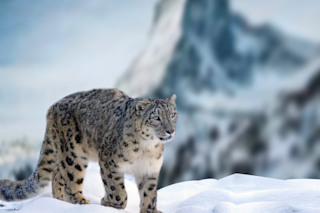Snow leopards are so rare that many of the researchers who have studied them for decades have never even seen one in the flesh.
These big cats may leave scat or even the occasional tuft of fur in a hair snare, but their passage is often ghostly — so much, in fact, that photographers are only just now capturing many aspects of their lives. In many areas, snow leopards still face conservation threats due to mining development, livestock herding and persecution from locals in their range.
The population growth prompted the International Union for Conservation of Nature (IUCN) to downlist the animals from “endangered” to “vulnerable” in 2017.
“They are extremely elusive, much more elusive and harder to see than most of the other big cats,” says Jan Janecka, a conservation geneticist at Duquesne University in Pittsburgh.
Despite their elusive nature, however, the charismatic snow leopard is rebounding in numbers ...















